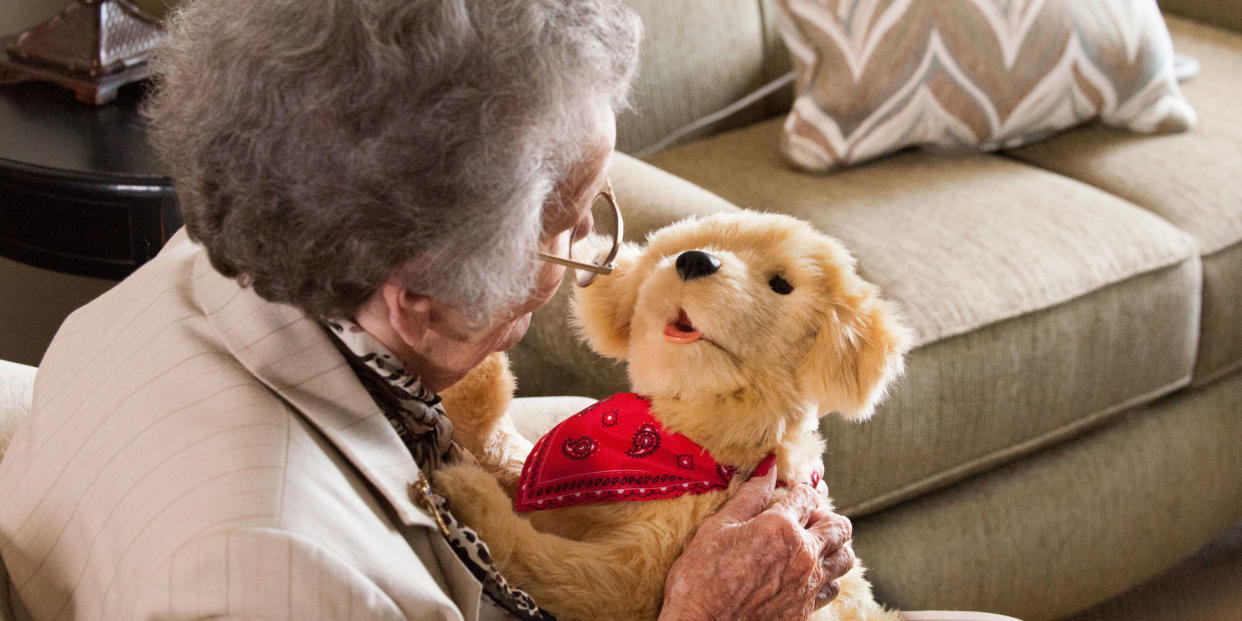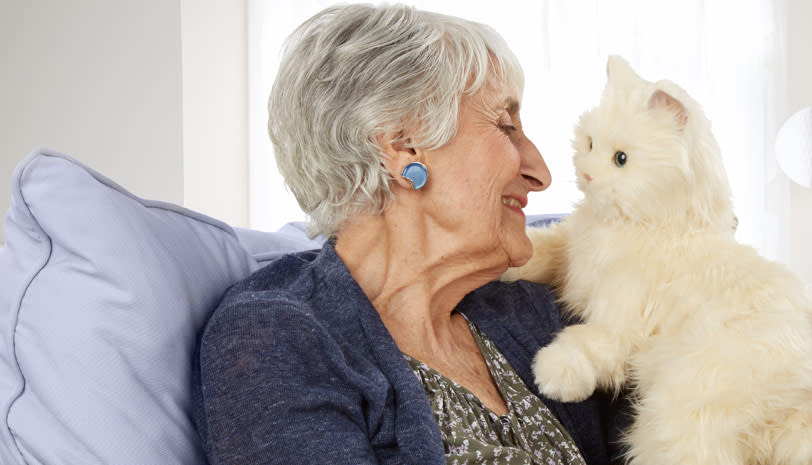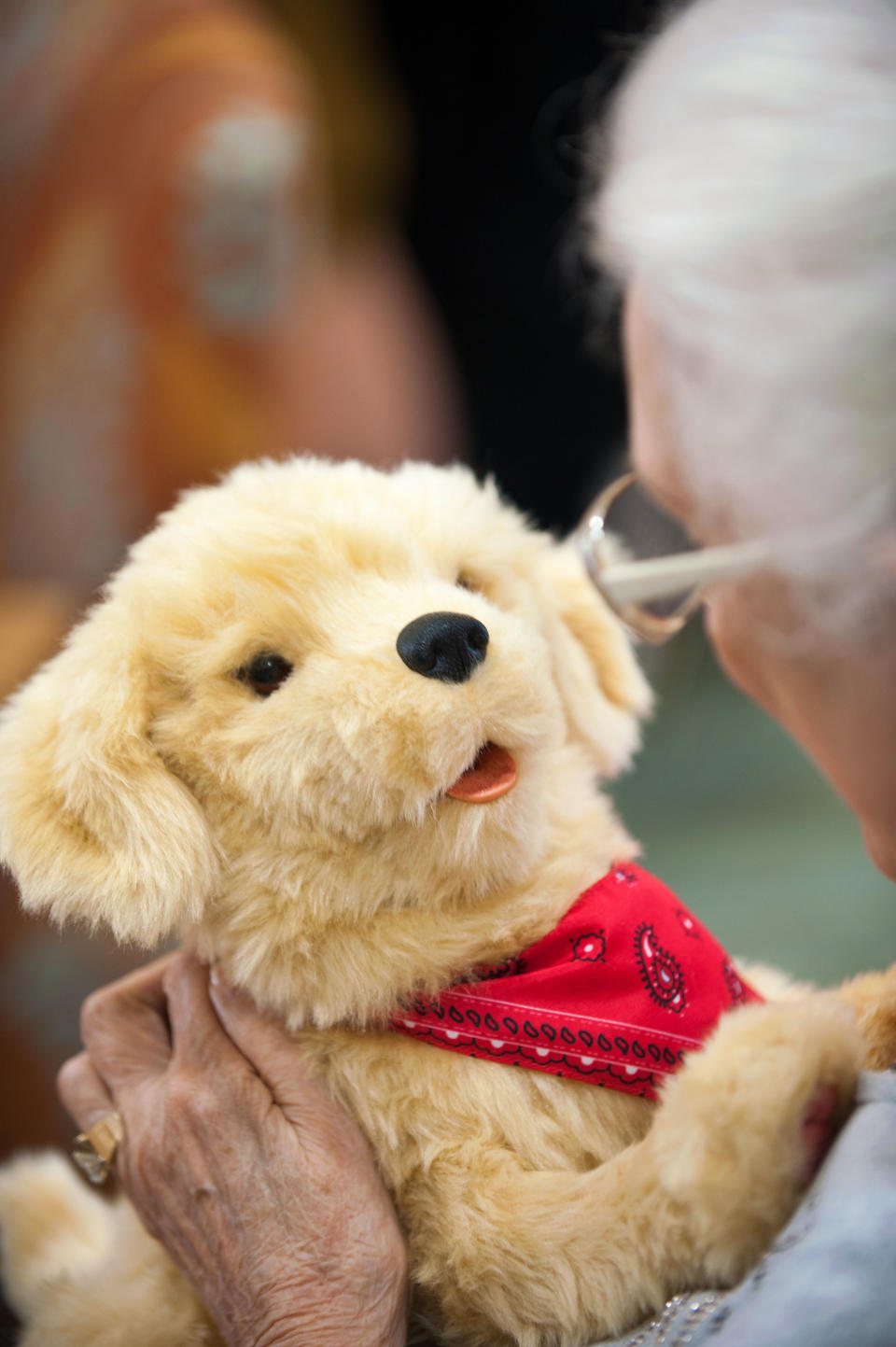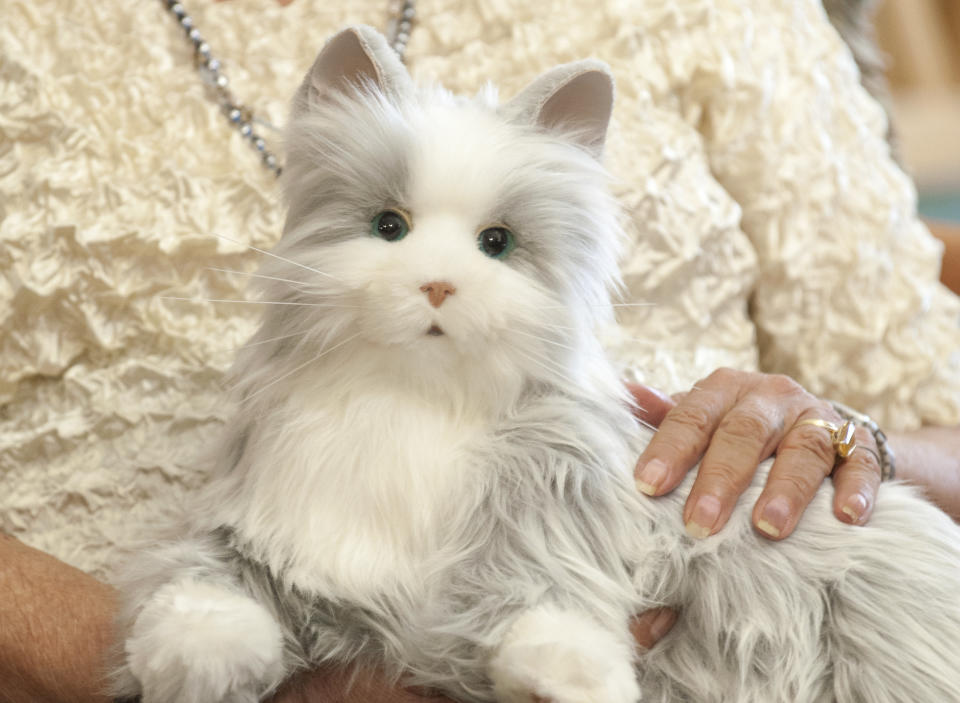The Strange Thing You're Going to Start Seeing at Nursing Homes

Otis looks like a cat. His orange, tabby fur feels soft, just like a kitten's. He even purrs, licks his paws, and rolls over like a feline. But Otis is not a real cat-he's one of Hasbro's Joy For All Companion pets, animatronic toys designed to interact with and bring comfort to the elderly.
The fact that Otis isn't a live cat doesn't seem to bother Joyce, a resident at Brookdale Belle Meade in Nashville, Tennessee, living with dementia. When Joyce first moved into Brookdale, she brought her pet cat, Otis, but when he became sick and passed away, Joyce experienced a cognitive decline, becoming easily agitated.

That is until her assisted living facility introduced the Hasbro cat, with whom Joyce bonded instantly, calling it by her late pet's name. Otis sleeps at the end of Joyce's bed, and she carries him around in her walker basket. "Every afternoon it's almost like a completely different person," Erika Gibson, Clare Bridge & Crossings Program Director, tells CountryLiving.com. "She's very calm. She has something that needs her. Her behaviors have decreased immensely. The cat has just provided her with that comfort and that love that she needed."
Joyce isn't the only resident who has taken to these robotic pets. There are currently more than 100 of these Hasbro cats and dogs in Brookdale's approximately 1,055 communities in 47 states. Brookdale's Alzheimer's and dementia care community, Clare Bridge, initially introduced them as a pilot program about one year ago, and since then, they've gotten pretty popular.
At $99, the company's battery-operated companions are much more accessible than earlier iterations of animatronics (you might remember PARO, Japan's robotic, therapeutic seal, which cost $500 in 2015). Both the three cats and the dog have sensors that respond to motion and touch and will nuzzle your hand when you stroke their cheeks. The cats will purr when pet and eventually roll over for a belly rub (the dog, a Golden Retriever pup, barks and has a heartbeat), and both species will fall asleep after a period of inactivity. Plus, as the site boasts about the cat, "No litter box. Just love," adding that the dog, "won't chew up your slipper."
While scientific research on the benefits of robotic pets has thus been inconclusive, there seems to be plenty of anecdotal evidence to support the beneficial effects.

But if owning a pet robot sounds weird to you initially, you're not alone.
"I was very skeptical at first because we've tried really hard in our dementia care settings not to have anything that's fake or deceiving in the environment-that's really important to me," Juliet Holt Klinger, senior director of dementia care at Brookdale, tells CountryLiving.com. "But once we piloted them, we just had overwhelming positive responses. We didn't have any negative responses or really any indifferent responses. Everybody just really loved them and engaged with them and they brought smiles and laughs and wonderful reminiscing stories about past pets and the results were just overwhelmingly positive."
Those "positive responses" vary depending on the residents' level of cognitive impairment, says Holt Klinger. Though residents living with dementia, like Joyce, tend to engage more and for longer periods of time with the companion toys, those in independent or assisted living settings without dementia exhibit a positive response, too-even if they fully understand the pet is not real.
Holt Klinger stresses that while the animatronic furry friends don't replace live animals in the communities (they still allow residents to bring pets to live with them and bring in real animals for therapy), Hasbro cats and dogs do provide a different experience. For one, "Sometimes for some of our residents who are pretty far advanced, pet ownership become pretty complex and not something that works anymore," Holt Klinger says. "So this has been a nice addition." Not to mention, live cats are a bit pickier about who they spend time with, whereas a robotic version will sit on a resident's lap for as long as he or she wants.

Just as in Joyce's case, animatronic pets often bring up memories of past pets, with residents frequently referring to the models by the name of a former cat or dog.
"It really accesses those very deep emotional connections I think most of us have had with pets in our lives," Holt Klinger says. "And it also accesses those nurturing emotions, which can be really strong and can help lesson anxiety and distress and provide a sense of security."
Even more than the initial joy and laughter Hasbro pets spark, Holt Klinger says the biggest impact they've seen is that sense of security. "There's a real sense of comfort, and being able to hijack those distressed emotions and turn them towards nurturing-any time we can do that and bring those more pleasant emotions to the forefront, it's a good thing."
If nothing else, they're a conversation-starter. Susan Turner says of her aunt, 96-year-old Clare Bridge resident, Jaunita Boschian, who no longer speaks but communicates through touch, "The cat attracts other residents around her. She enjoys the interaction and attention the cat provides, bringing pleasure to others and to her."
You Might Also Like

